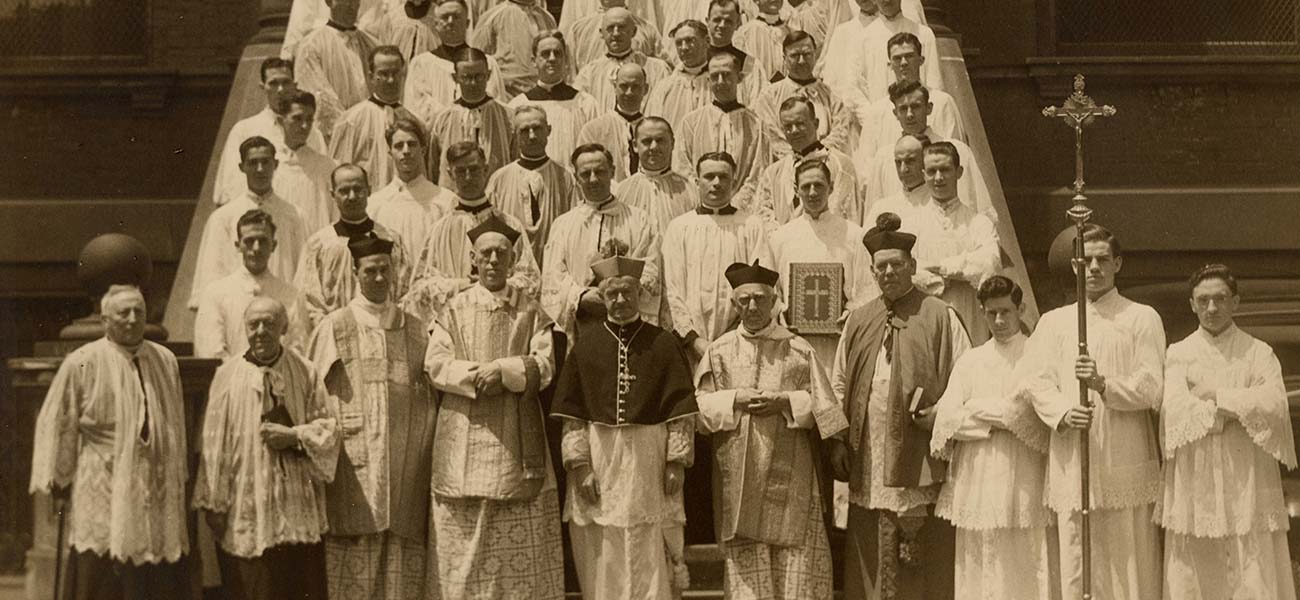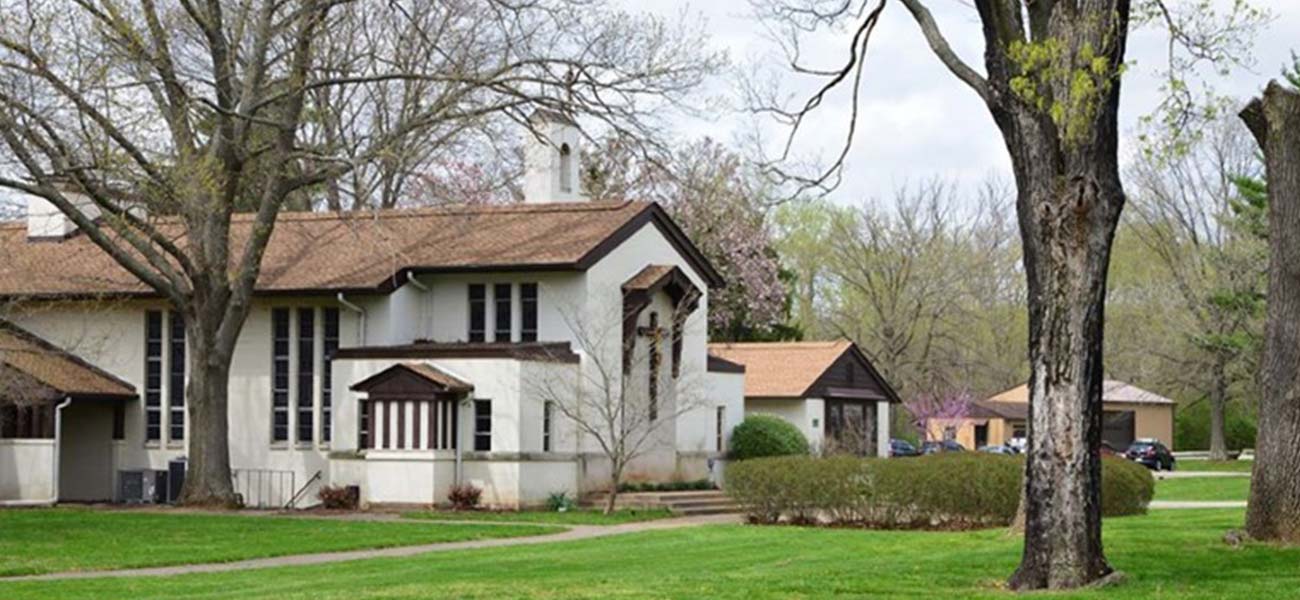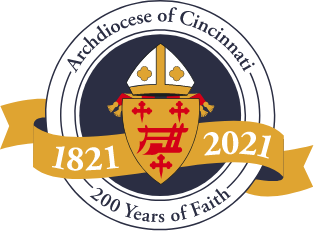
Jesuits
Over the 200 years of the history of the Archdiocese of Cincinnati, the Society of Jesus, the Jesuits, focused on two major areas of ministry: educational and pastoral/spiritual.
The involvement of the Society of Jesus in educational ministry in Cincinnati began in 1840, when Bishop John B. Purcell arranged for the Jesuits to take over the lay college that was part of the Athenaeum. The Jesuits renamed their school St. Xavier College and followed the six-year model used by Jesuit schools in Europe.
By 1911, the college had purchased property in Avondale, and the school formally moved there. On April 4, 1930, St. Xavier College became Xavier University.
Meanwhile, the high school continued to function downtown at Seventh and Sycamore on the property next to St. Xavier Church. There was an elementary school that was once part of the mix, in addition to a branch high school that had a couple of brief stints in Walnut Hills. The Sisters of Notre Dame de Namur founded the St. Xavier Commercial School, a two-year program that prepared young women for the business world.
The program at the boys’ high school began to expand and change. Curriculum continued to evolve, growing and expanding to offer a wide array of options, including a full slate of advanced placement courses that allowed students to earn college credits while still in high school.

There was no room for expansion on the property at Seventh and Sycamore, so after several years of fundraising, the school moved to a new location on North Bend Road in Finneytown in 1960. The move to a new campus was not the end but rather the beginning of several decades of growth and development. The facilities changed and expanded. Programs diversified and flourished.
Drawing on the rich heritage of the Spiritual Exercises of their founder, St. Ignatius of Loyola, Jesuits in Cincinnati have fostered the interior life of people operating out of parishes and retreat centers.
The Society of Jesus assumed the staffing of the church on Sycamore near Sixth in 1840. When a larger church was needed, the present brick edifice with sandstone facing was erected in 1859. Gutted by a massive fire in 1882, it was soon rebuilt.
Along with physical updating, the years since Vatican II have also seen progress in liturgical spirit. Lay persons, both men and women, assumed liturgical roles, and a splendid choir was developed. A parish that wants to have an active and engaged laity must also invest in formation. That includes initial formation to bring new members into the Church. There also needs to be a constant flow of adult continuing formation experiences. The recent renovation of the undercroft provides an excellent venue for classes, days of recollection and other programs that foster ongoing growth.
St. Robert Bellarmine Parish began in 1927, in a worship space in Schmidt Hall on the campus of Xavier. The church served both the people in the neighborhood and the students. In 1962, the present chapel was built. It was remodeled in 1998, and again as part of the addition that took place in 2004. One sign of the value the congregation places on its communal worship is the care taken with liturgical art and environment. Members of the Jesuit Community preside at Eucharist and nourish the faith life of members of the congregation with outstanding homilies. Lay people assume active roles in all the positions open to them. Bellarmine has the full range of parish services and ministries. There is faith formation appropriate to each stage of life. Small faith communities are available. Retreats are offered on campus and at away facilities. Preparation enriches participation in the sacraments. The parish takes social mission very seriously and has a full-time director to foster involvement both locally and beyond.
Jesuit retreats in Cincinnati began in the late 1920s, at Elet Hall at Xavier University and quickly moved to the Rock House and Barracks at Milford. Around 1968, the barracks were demolished, and the new Loyola Building was constructed mainly for youth retreats. Today the Jesuit Spiritual Center has its own youth ministry team consisting of three professional full-time ministers and four live-in young adult interns. The Spiritual Center has many adult conference retreats for both men and women. The Center also offers this sacred space for outside groups to use for their retreats and day programs. There are three chapels on campus, in addition to very attractive grounds.

